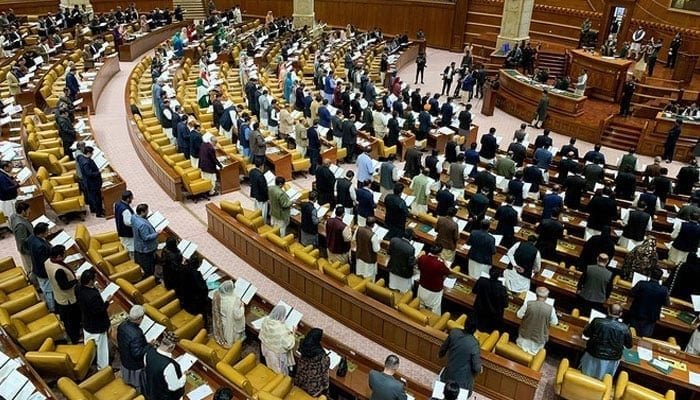Ahmed Riaz
The recent address by the Federal Minister for Finance, Muhammad Aurangzeb, at the Karachi Chamber of Commerce and Industry shed light on the ongoing efforts to achieve macroeconomic stability before steering the country’s economy toward growth. The minister highlighted the pressing structural challenges that, if left unaddressed, could result in balance of payments issues, as evidenced by previous cycles that led the country to seek assistance from the International Monetary Fund (IMF) on numerous occasions.
The July Economic Update and Outlook report by the Finance Division underscores a lack of data on credit to the private sector, signalling heavy government involvement in deficit financing, as indicated in the Monetary Policy Statement of 29 July. This approach, if not carefully managed, has the potential to significantly crowd out private sector activity. Furthermore, the report did not provide a detailed breakdown of releases under the Public Sector Development Programme, a critical driver of growth in previous years.
Addressing the need to stimulate specific sectors, the Finance Minister encouraged banks to increase lending to the IT sector, agricultural sector, and small and medium enterprises. However, concerns arise regarding the government’s plan for additional domestic bank borrowing in the 2024-25 budget, representing a substantial 78% increase from the previous year. This increase could potentially strain the banking sector and lead to higher interest rates for borrowers.
Pl subscribe to the YouTube channel of republicpolicy.com
The fundamental question lingers: what tangible measures have been implemented to achieve macroeconomic stability? The recent staff-level agreement with the IMF and subsequent efforts to secure rollovers and re-profile debts indicate progress in meeting IMF conditions. However, these actions have triggered public discontent, highlighting the challenge of balancing policy decisions with public sentiment.
Aurangzeb expressed optimism about planned measures to increase income tax rates and broaden the tax net to cover small traders. The success and public acceptance of these measures remain to be seen in the upcoming months.
The budget projections include an ambitious 40% rise in Federal Board of Revenue (FBR) collections, with significant increases in sales tax and petroleum levy collections. The disproportionately high burden of indirect taxes on the common populace, compared to the wealthy, calls into question the impact of these tax policies on different segments of society.
The heavily contractionary fiscal policy for the current year raises significant concerns about its compatibility with achieving the targeted growth rate of 2.5 to 3.5 percent. There is an urgent and clear need for a paradigm shift in thinking to align fiscal policies with the goal of achieving stability and growth, a shift that has not been evident in the current budget proposal.
Given the economic challenges, there is a pressing need for out-of-the-box thinking, including a reduction in government current expenditure to minimize reliance on external and domestic borrowing. The burden of fiscal reforms should not fall disproportionately on an already heavily taxed public, especially considering the high poverty levels in the country.
Additionally, reforms in the mismanaged power sector should focus on addressing inefficiencies and redirecting subsidies to ensure that the burden does not solely fall on taxpayers. The need to expand the tax base to include wealthy individuals and traders is acknowledged, but the timing and economic context require a more balanced and fair approach that garners public support.
In conclusion, achieving stability and setting the stage for sustainable growth necessitates a comprehensive strategy that involves carefully evaluating current expenditure items, engaging in meaningful fiscal reforms, and garnering public support to defuse potential social unrest. This approach is crucial to guiding the path toward macroeconomic stability and inclusive growth.















